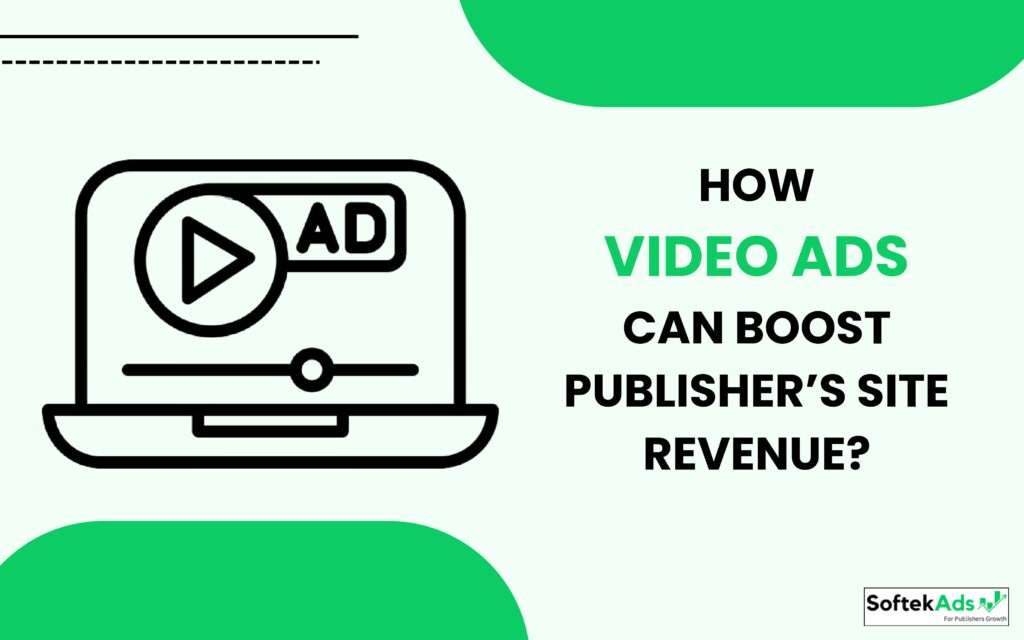How Video Ads Can Boost Publishers’ Site Revenue?

Introduction
In the ever-evolving digital landscape, publishers are constantly seeking new ways to monetize their content and increase their revenue streams. One increasingly popular strategy is the use of video ads on their websites. Video ads have proven to be a highly effective tool for boosting publishers’ site revenue, and in this article, we’ll explore the reasons why.
The Rise of Video Advertising
Video content has become increasingly popular among internet users, with more and more people consuming video on a daily basis. This shift in consumer behavior has not gone unnoticed by advertisers, who have recognized the immense potential of video ads to reach and engage their target audiences.
According to recent studies:
- Video ads have a higher click-through rate (CTR) compared to traditional display ads.
- Video ads are more memorable and can have a greater impact on brand awareness and recall.
- Viewers are more likely to engage with video ads, leading to higher conversion rates.
Benefits of Incorporating Video Ads
By incorporating video ads into their website, publishers can unlock a range of benefits that can significantly boost their site revenue. Let’s explore some of the key advantages:
Increased Ad Revenue
Video ads typically command higher CPM (cost per thousand impressions) rates compared to traditional display ads. This is because video ads are more engaging and effective, making them more valuable to advertisers. By incorporating video ads, publishers can potentially earn more revenue per ad impression, leading to a significant increase in overall site revenue.
Enhanced User Experience
When done right, video ads can actually enhance the user experience on a publisher’s website. By providing relevant and engaging video content, publishers can keep their audience entertained and engaged, leading to longer session times and increased page views.
Improved Monetization Opportunities
Video ads open up new monetization opportunities for publishers, such as pre-roll, mid-roll, and post-roll ad placements. This allows publishers to diversify their revenue streams and maximize the earning potential of their content.
Increased Brand Awareness and Loyalty
Effective video ads can help build brand awareness and foster loyalty among the publisher’s audience. When viewers engage with and enjoy the video content, they are more likely to remember the advertised brands and products, leading to potential future conversions.
Implementing Successful Video Ad Strategies
To effectively leverage video ads and boost their site revenue, publishers need to implement a well-thought-out strategy. Here are some key considerations:
Content Relevance
Ensure that the video ads displayed on your website are relevant and valuable to your audience. Irrelevant or intrusive ads can negatively impact the user experience and lead to ad fatigue, ultimately hurting your revenue.
Ad Placement and Optimization
Carefully consider the placement of your video ads to maximize visibility and engagement. Experiment with different ad formats, such as pre-roll, mid-roll, and post-roll, to find the optimal placements for your audience.
Monetization Partnerships
Collaborate with reputable video ad networks and platforms to access a wider pool of advertisers and ensure competitive ad rates. Continuously monitor and optimize your partnerships to ensure you’re getting the best possible returns.
Video Content Creation
In addition to incorporating video ads, consider creating your own original video content. This can help you build a loyal audience, increase engagement, and potentially attract higher-paying advertisers.
Audience Targeting and Segmentation
Leverage data and analytics to understand your audience’s preferences and behaviors. Use this information to target specific user segments with tailored video ad experiences, leading to higher engagement and conversion rates.
Overcoming Challenges
While the benefits of video ads are clear, there are also some challenges that publishers need to address:
- Ad Blockers: The rise of ad-blocking software can hinder the effectiveness of video ads. Publishers should explore strategies to mitigate the impact of ad blockers, such as offering ad-free subscription models or implementing anti-ad-blocking technologies.
- Viewability and Fraud: Ensuring that video ads are viewable and not subject to fraudulent activity is crucial. Publishers should work closely with their ad partners to implement robust viewability and fraud-prevention measures.
- User Experience: Striking the right balance between monetization and user experience is essential. Publishers should carefully monitor user feedback and adjust their video ad strategies to maintain a positive user experience.
Conclusion
In the ever-evolving digital landscape, video ads have emerged as a powerful tool for publishers to boost their site revenue. By leveraging the benefits of video advertising, such as increased ad revenue, enhanced user experience, and improved monetization opportunities, publishers can unlock new revenue streams and drive sustainable growth.
To maximize the impact of video ads, publishers should focus on content relevance, strategic ad placement, strong monetization partnerships, and audience targeting. By addressing the challenges associated with video ads, such as ad blockers and viewability concerns, publishers can create a winning video ad strategy that benefits both their business and their audience.
As the demand for video content continues to rise, publishers who embrace the power of video ads will be well-positioned to thrive in the digital landscape and secure a prosperous future for their businesses.

